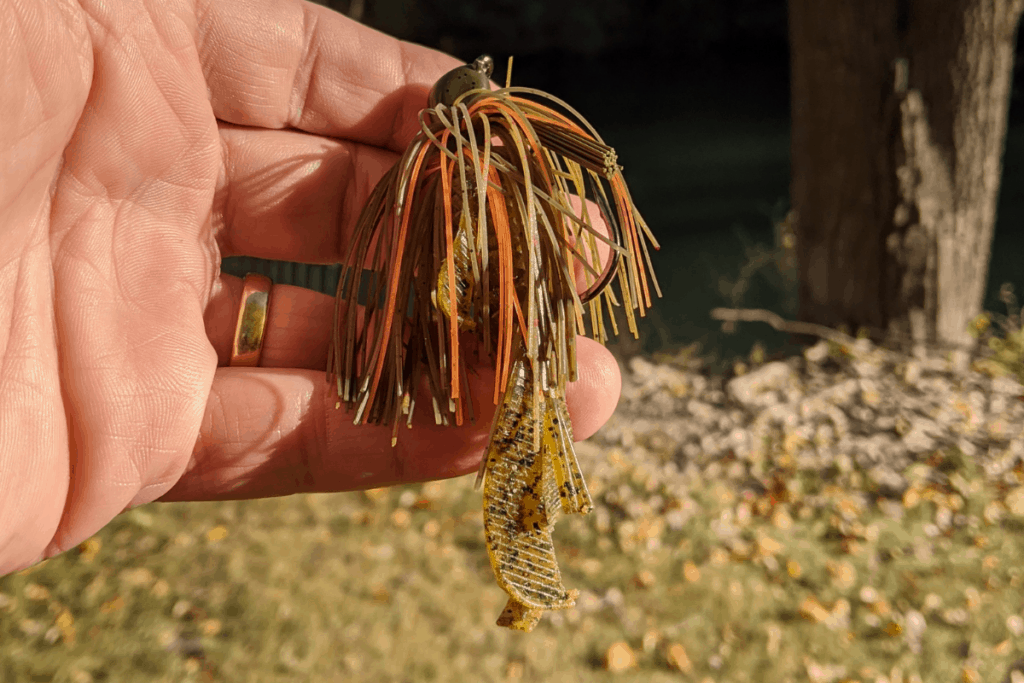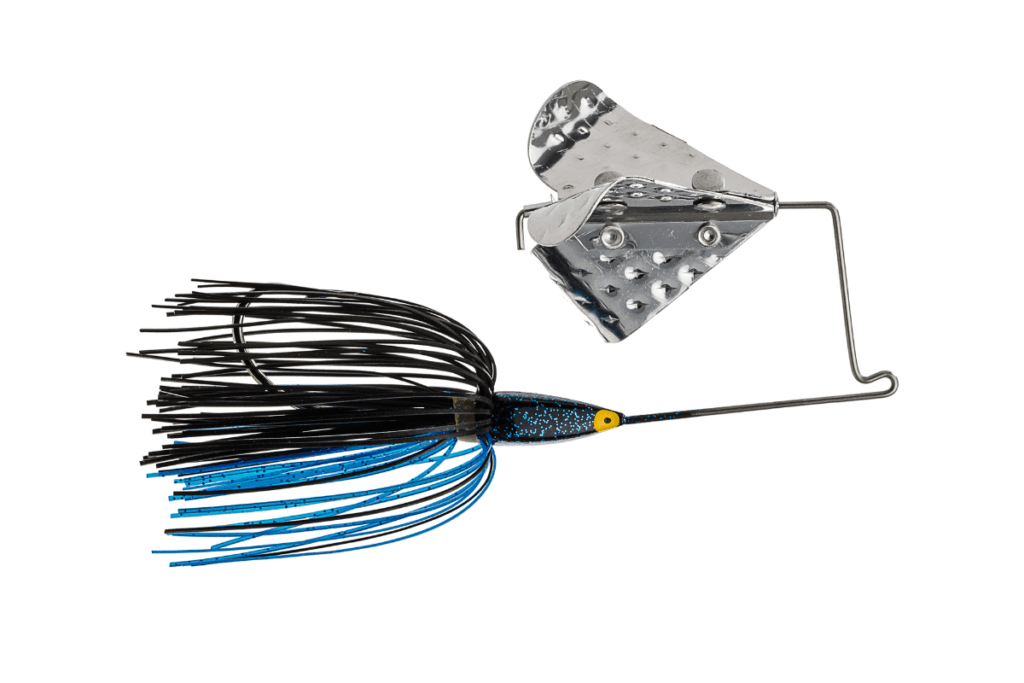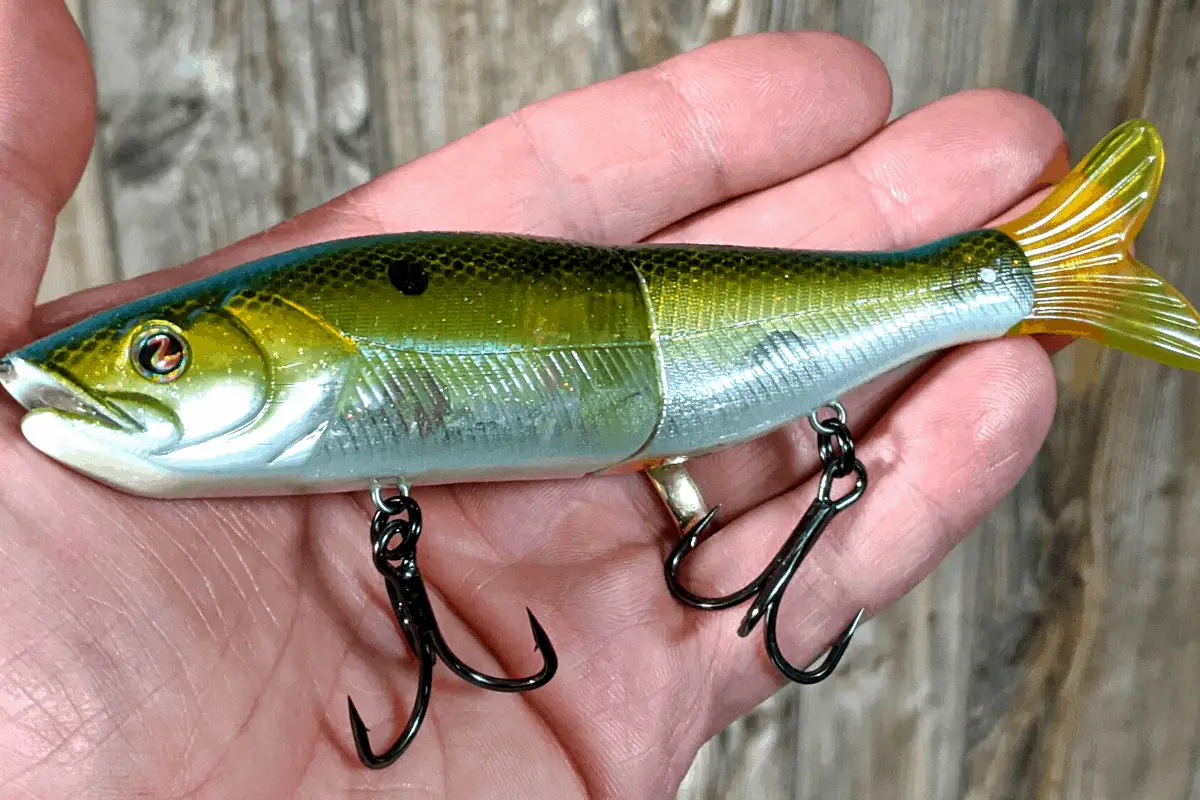There are hundreds of lures that catch bass, but there are a few that are more likely to catch a lunker than others. Some work because of their size. Others catch big bass because of how they are fished.
If you are looking to focus on big fish there are a few lures that stand out above the crowd. These include jigs, glide baits/swimbaits, and buzzbaits. Each of these lures have characteristics that make them big fish magnets.
In this article, I will break down each of these lures so you can apply this information to the water you fish and up the odds of catching a true trophy bass.
What is a Trophy Sized Bass?
Every body of water is different. If you live in states with warmer weather and longer “growing” seasons, a trophy bass may be something over the 10lb + range. I live in northern Illinois. If someone catches a six-pounder on my home lake that is definitely considered a trophy.
The Jig
A flipping or pitching jig has been considered a big bass lure for decades. Of course, it will catch fish of all sizes, but a jig has the right combination of characteristics that mean the next thump on the end of your line might be the result of a monster sucking that bait in.
So why does a jig catch big fish?
Jigs are designed to be tossed into thick cover. These are the types of places that trophy bass like to call home. It can be a gnarly brushpile, emergent vegetation, or giant boulders. It doesn’t matter. A jig is designed to make the best of all these situations.
Big bass are the proverbial “kings of the hill.” They are survivors. Part of the reason is because they have found refuge in these hard to reach places. The thick cover also offers ample opportunity to ambush unsuspecting prey.
A jig drops through these tangled hideaways and can be worked through them with ease. The single hook design paired with a weedguard minimizes snags yet allows for efficient transfer of energy to the bass’s bony lip.
The skirt design on a jig also helps.
As it flares out in the water column, it offers a silhouette of a creature much larger than it actually is. Paired with an appropriate soft plastic trailer, the bulk of the jig presents as a meal that big fish consider worth the time and effort.
Big bass get that way from taking in more calories than they burn. A jig fits that menu option nicely.

Throw it Where Others Shy Away From
Another huge factor as to why a jig catches big fish is because not every angler throws the lure into the nastiest cover they can find.
People spend a lot of money on their baits and do not want to get snagged, or even worse, break off. (If you would like to read more about how to fish jigs efficiently, click on this article.)
I have watched numerous anglers only toss a jig around the edges of a brushpile and refuse to throw into the middle of it. This means that your odds of catching a monster that lives there go way up – if you are one of the brave souls that go in and get them. The fish is untouched and a jig will reach in there and present a snack right in front of that potbellied bass.
Glide Baits and Swimbaits
I have categorized these two lures in the same niche, although they are slightly different.
A swimbait is usually made from soft plastic and relies on a paddle tail of some sort to impart the action needed to attract fish. The retrieve is often slow-and-steady allowing the tail to do the work.
A glide bait is most often made from hard plastic and has a single joint at the midpoint in the body. The bait is retrieved with a cadence that allows the lure to glide with a side-to-side action. It also slowly sinks when paused.
I also lumped these two together because they are often oversized. These lures typically run anywhere in length from 6” – 10”. That is a pretty hefty meal for hefty bass.
Which is why these lures are big bass catching machines. (See Featured Photo at the top of this article.)
Glide baits and swimbaits really got their foothold in California. The large reservoirs in the Golden State are often stocked with trout. The lunker bass in the impoundments have grown super-sized feeding on these high-protein sources of food.
It took a few years, but the glide bait and swimbait craze eventually moved east. Savvy anglers from the far northeast to the deep south have utilized these lures to hook up with some of the largest bass in their home waters.
The first of these lures on the market almost exclusively represented trout in the coloration and design. Manufacturers have since expanded their choices to include patterns that match a wide range of forage that can be found in many waterways across the country.
I have recently purchased some that mimic the bluegill that are the main forage on my home lake.

Buzzbaits for Big Bass
The venerable buzzbait has lost some of its luster with the newer or more popular models of topwaters. Despite a wane in fan-favorite, it still produces some of the biggest bass you may catch all season.
Of course, it is an excellent low-light lure, but don’t dismiss it in the middle of the day.
The gurgling and chopping action of a buzzbait calls up big fish even when the sun is high and beating down. Its planing head allows the lure to come over the top of all sorts of cover that other topwaters with dangling trebles couldn’t think of doing.
I stand firm in the belief that a buzzbait catches its share of lunkers because of the larger profile it exudes. This decades-old thrashing lure is also more adept at coming through a slight chop.
Other topwaters are meant to be used on a calm surface and are relegated to the storage box if a slight wind blows up.
Buzzbaits also excel in the area of modification. The wire can be slightly bent to make the blades hit the arm. Holes can be drilled into the blades to leave a bubble trail. I have even fished with anglers that add jingle bells to the lure to create a sound that is unique and effective.
To up your odds of landing that lunker, be sure to use your buzzbait with a trailer hook. There is no sense in having a 10lb’er slash at it only to miss.
Final Thoughts
Year-after-year these lures do a remarkable job of singling out the biggest fish in the water and enticing them to bite. Don’t get me wrong, any lure can catch a big fish, but there are some out there that require you to fish through a lot of smaller bass before the larger ones get ahold of it.
A drop shot is a perfect example. I have caught some really nice fish on a drop shot rig, but at times I have had to fish through twenty little ones to get there.
What are your favorite big fish lures? Drop a comment below and let me know.
Don’t forget to go out and encourage someone today, you never know what a difference you could make in their life. Be safe. Have fun and tight lines.

